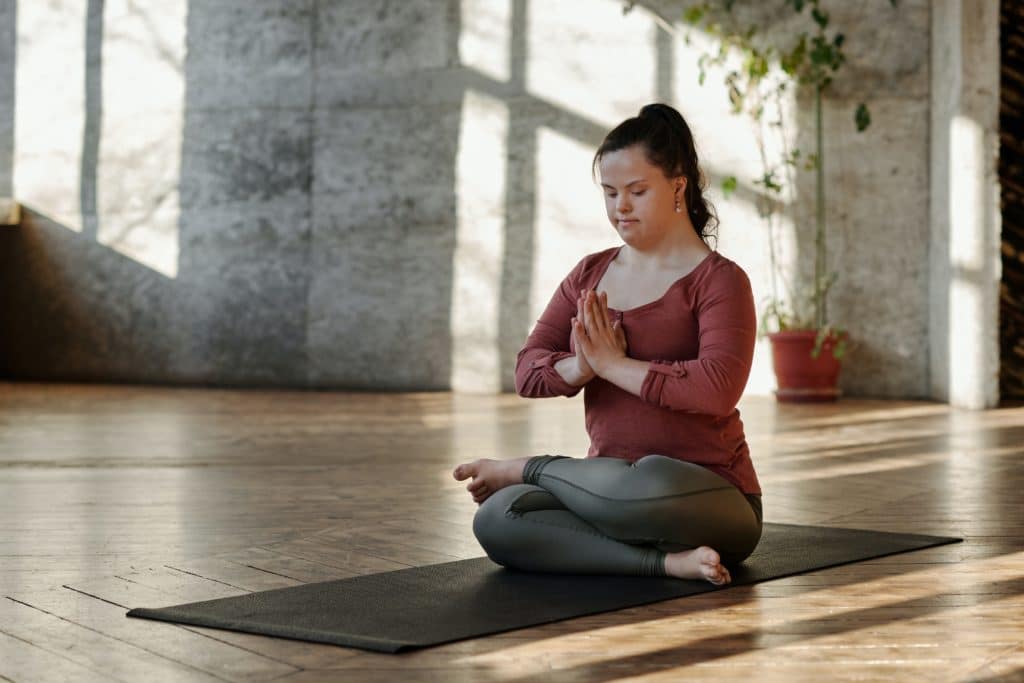Culture & society determine what is considered beautiful
Ideals of beauty have existed for a long time. In Japan, people used to dye their teeth black, in the Baroque era people wore luxuriant curly wigs, and in the Middle Ages pale skin was considered respectable. A beauty ideal describes an idea of what is considered beautiful. This idea differs between and within cultures and is subject to change over time. The current ideal of beauty in the Western world describes people with pale skin, men as tall and muscular, and women as slim to athletic and with long hair. The media in particular set the pace here, because they decide which people they show in their magazines or advertising clips. If you look at the cover pages of the popular "women's magazines", you will notice that they usually feature white, mostly blonde or brunette women with a slim figure and bright white smiles. In the usual magazines, which focus on men as a target group, a strong, muscular man with large biceps or six-pack is always to be seen.
When people are confronted with these stereotypes from birth in magazines, series, movies, on Instagram or advertising posters, they internalize these ideals of beauty and are tempted to strive for them themselves. This sometimes has far-reaching consequences, as described in the following sections.
Capitalization & health risks
Many people come under pressure due to the prevailing ideals of beauty and want to look exactly as exemplified by the media. In order to live up to social and personal expectations, people are willing to invest money and work in their appearance. The industry is particularly happy about this: weight loss pills for a slim figure, expensive creams to make wrinkles disappear, waxing products for women's legs or men's backs. There is even a device to train the jaw muscles, because a pronounced or prominent jaw muscles in men should be attractive. It becomes especially problematic when not only money and time are spent on appearance, but one's own health is put at risk. A summery tan can be produced not only on vacation, but also artificially in the solarium. The fact that regular visits to the tanning bed increase the risk of skin cancer then seems to play rather a subordinate role. The number of cosmetic operations is increasing, while young people in particular are confronted around the clock with photos of supposedly flawless people in the social media. In addition to lowered self-esteem and self-doubt, the slimming craze can also lead to mental illnesses such as anorexia. Girls and young women are particularly affected by this, as the pressure to look beautiful is especially high for them.
Beauty work is primarily a woman's business
Female bodies in particular are portrayed in public (often for advertising purposes) and receive attention in public spaces if they are white, young, sexually attractive and free of wrinkles, body hair and with as little body fat as possible. In this context, women are there to look as good as possible next to the advertised product in order to increase the sales volume of the manufacturing company. In general, women are required to invest more and more lavishly in their appearance, which can be seen, for example, in the seemingly endless range of beauty products for a wide variety of body regions from head to toe. At the same time, cosmetic products intended for women are often more expensive than those for men, even if, as in the case of razors, it is only the difference in color that determines the price premium. This phenomenon is also described as a "pink tax", i.e. a quasi extra tax for feminized products. Unfortunately, anyone who wants to escape this unfair pricing policy and the beauty craze in general must also live with the consequences, because those who are already optimizing their appearance and appearance to the outside world also benefit from it.
The Benefit of Beauty Work in the Performance Society
In the neoliberal and digital performance society, the healthy, fit and white body is considered the norm. The more one invests in it, the more likely it is to be seen to perform. People who are considered attractive actually have various advantages over people who do not conform to the prevailing beauty ideal, so-called "pretty privileges": better grades in school, more success in the job market, a higher salary and opportunities for promotion, more success in choosing a partner, and even better health care. It's no wonder that the pressure to optimize is increasing, when it's quite normal to optimize photos with an appropriate filter before uploading them, or certain programs in video conferences are used to make our selves look better.
Investing in appearance is therefore not purely superficial, but improves one's own future prospects and often even offers protection against discrimination and exclusion.
Lookism
Appearance plays a significant role in society. If you are among people, it is not uncommon to hear sentences like: "Have you seen this hairstyle?" or "How can you walk around like that? This behavior, which probably every one of us has displayed at some point, is called lookism. Lookism is an evaluation (mostly devaluation) based on the outer appearance of a person. The evaluation is usually unconscious, but is an integral part of our experience. It becomes problematic especially when lookist discrimination takes place. By discriminating on the basis of a person's appearance, this person is attributed to a certain group, which supposedly leads to conclusions about character traits and competencies. This is how persistent clichés persist, which often serve to devalue others, e.g. that overweight people are labeled as lazy and sluggish. These erroneously drawn conclusions are also still after-effects of a pseudoscience of the 19th century, physiognomics. This was an attempt to determine a person's level of development and propensity to commit crimes based on physical characteristics (especially the shape of the skull). To this day, these after-effects can be felt in the form of sexism, racism, rejectionism (discrimination against people with disabilities), fat-hatred and ageism (discrimination against older people). Accordingly, lookist discrimination primarily affects marginalized groups, especially queer people, people of color, women with headscarves, people with disabilities, overweight people, and older people.
Body Shaming, Positivity & Neutrality
When discrimination based on a person's appearance becomes visible through insult or humiliation, it is referred to as body shaming. Ironically, it can be assumed that this makes especially those people appear as ugly who show such disrespectful and unacceptable behavior. Fortunately, there are counter-movements that counter the devaluation of individuals. Body positivity holds the view that every body is unique and therefore beautiful, and that unrealistic beauty ideals should be abolished. The movement has gained popularity on social media channels, especially in recent years.
Body shaming is out, and body positivity does not appeal to everyone, because some people simply do not feel comfortable in their bodies. We should therefore be aware of one thing above all: We are more than our bodies, because what counts above all are our inner values.
Why You Don’t Have to Follow Every Trend: Question the Mainstream
In a world constantly producing new trends and fashions, many of us often feel pressured to follow every new hype. But is it really necessary to follow every trend just to fit in? In this article, we’ll explore why sometimes it’s better to stay true to ourselves and not follow every trend. The Temptation of […]
Easier active through routines
Many of us often find it difficult to do what we set out to do. Everyone knows the good resolutions for the new year, which are often already a thing of the past after a few weeks. This is no wonder, because our brain follows its reward system with anchored routines as if on autopilot. […]
Mindfulness Training
Mindfulness training 🧘🏻 was long regarded as purely spiritual and unscientific. The image changed in recent years, when mindfulness training has even found its way into competitive sports through scientific findings and inclusion in clinical psychology. Learn now how you can practice mindfulness with yoga, meditation, Qigong and Tai Chi. Mindfulness Mindfulness originally comes from […]







